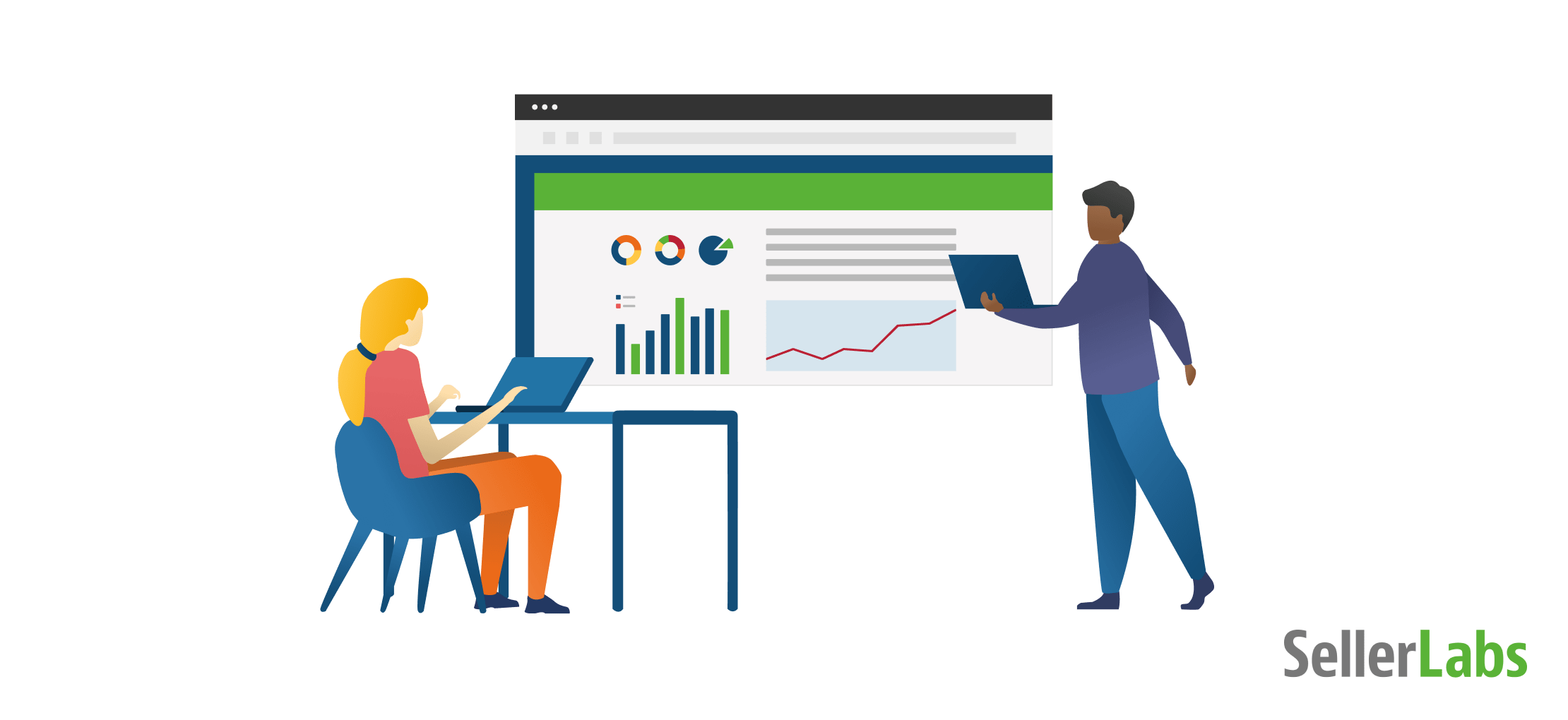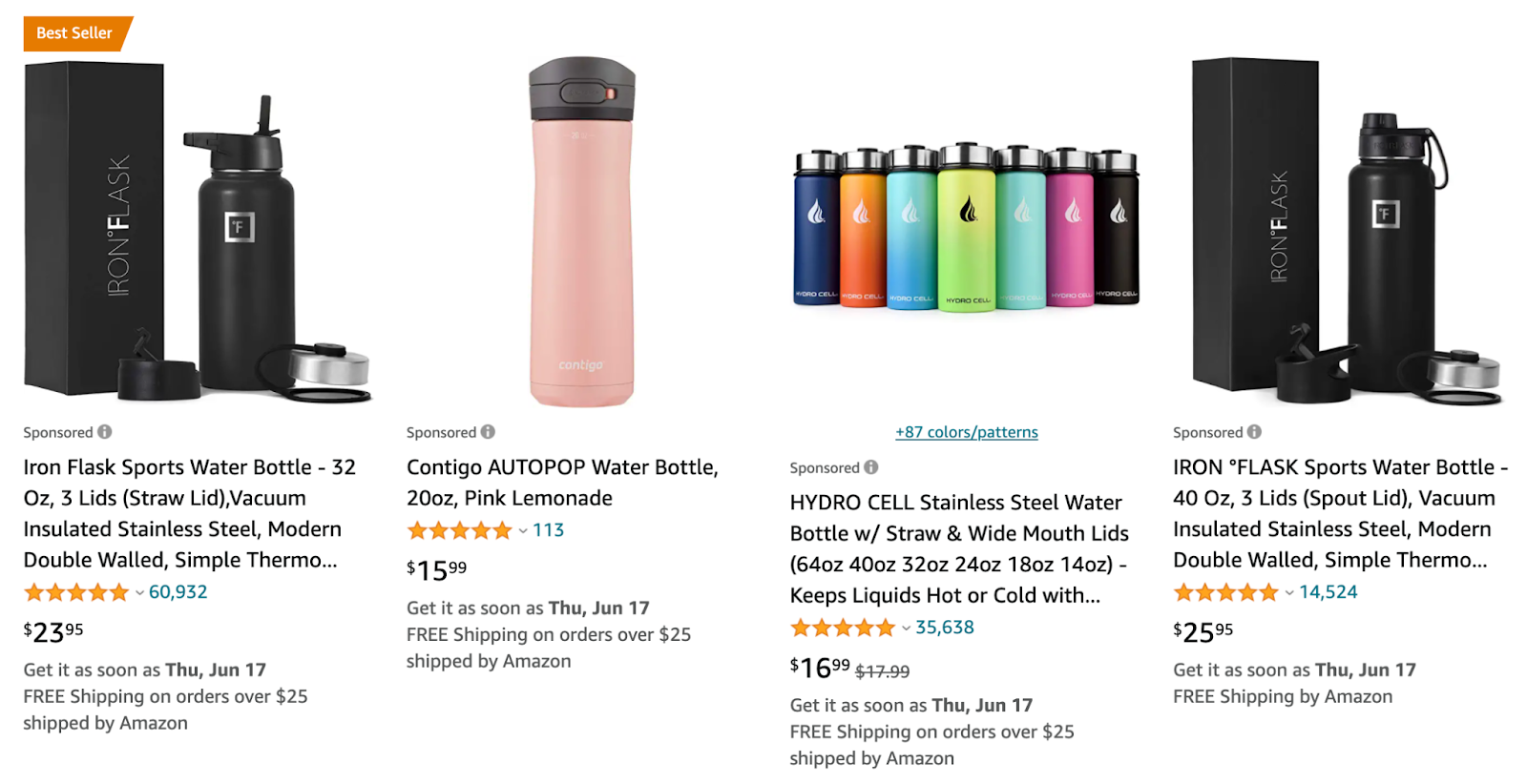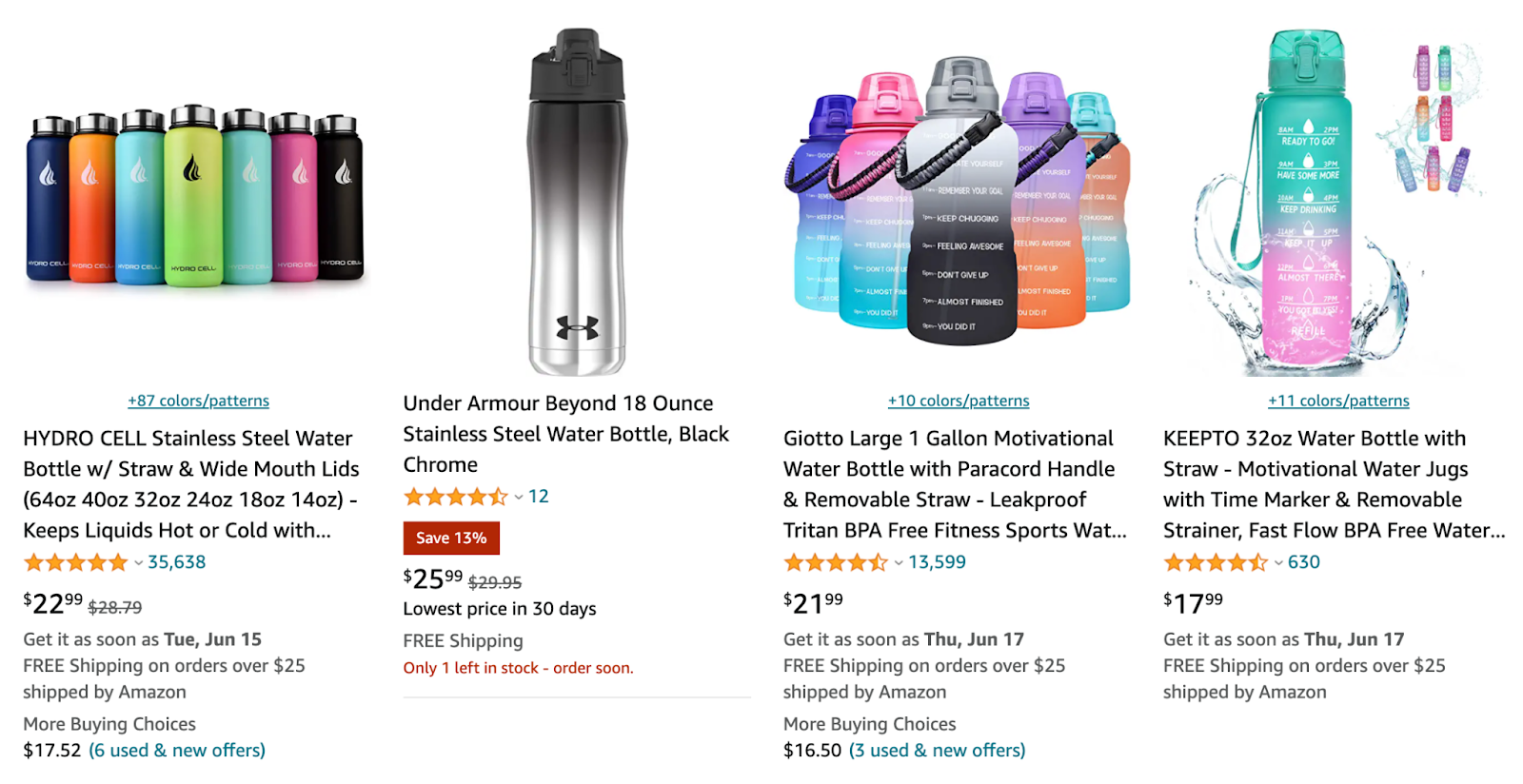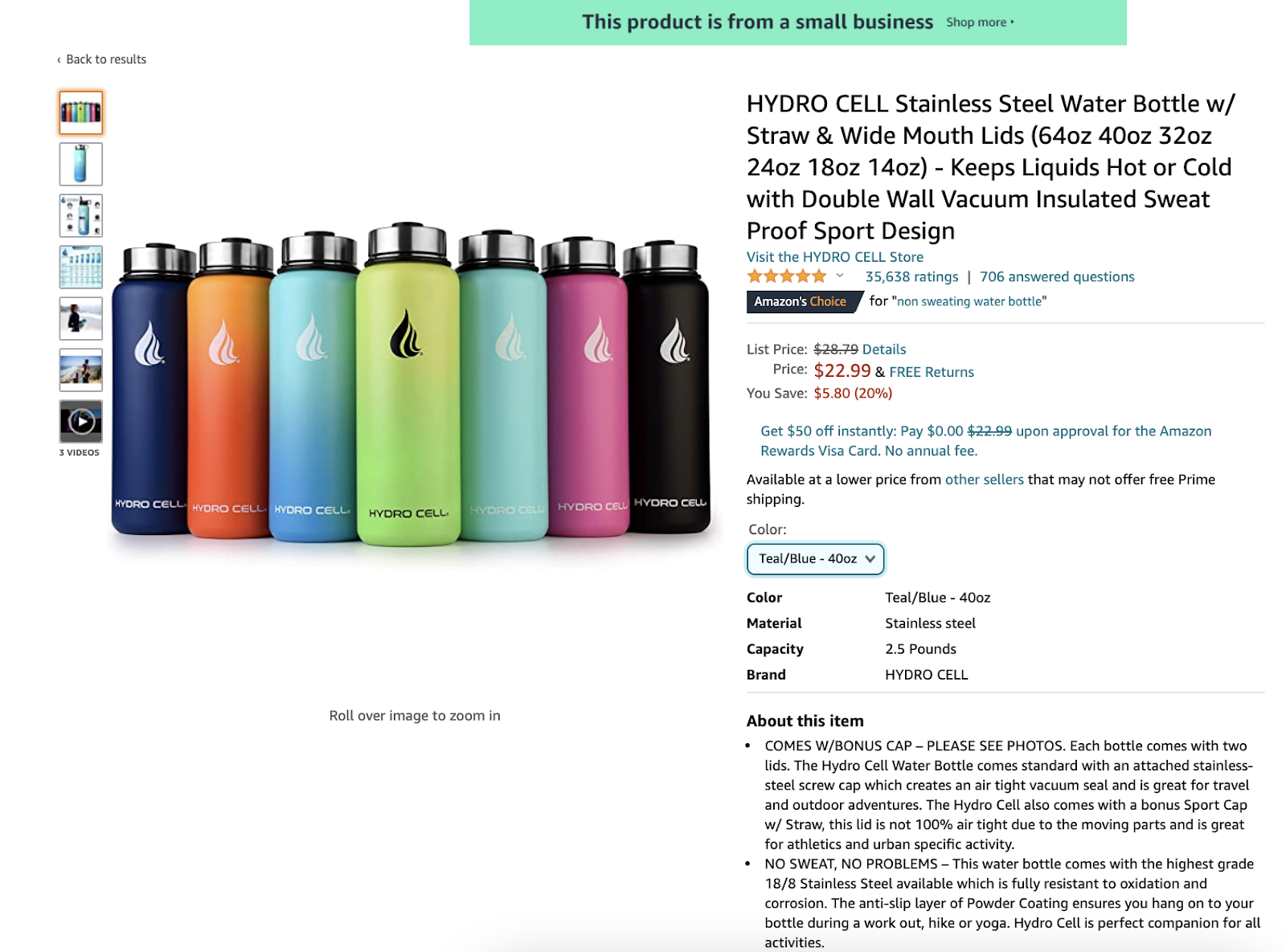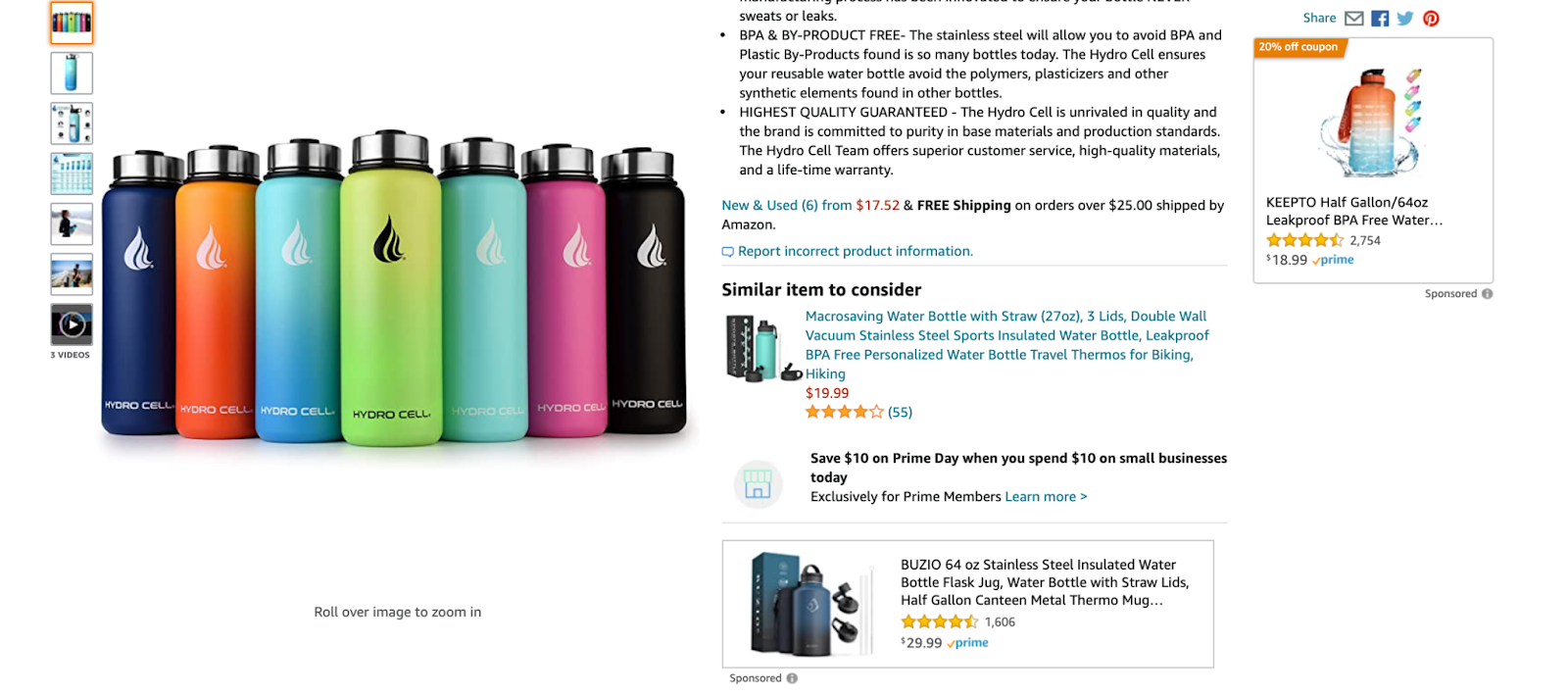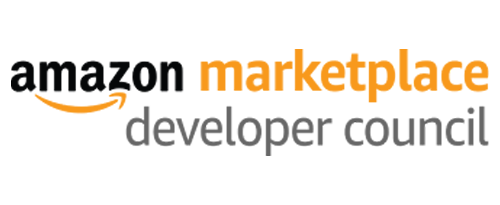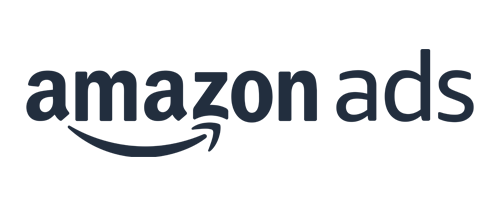Selling online, regardless of the marketplace in which you operate, is one of the toughest businesses there is. Highly-qualified people with quality products and services all compete for the same shoppers, which makes conducting frequent competitive analyses an integral part of your strategic plan.
How can you stand out from the crowd? How can you use the information that is openly available to your benefit? How do you leverage your competitors’ pages towards your own strategy?
On our Prime Day AMA webinar, we had a question from the audience about how to properly conduct a competitor analysis, especially around times like Prime Day. Since that’s enough content for its own webinar, we decided to create a detailed post you can come back to time and time again..
When should I conduct a competitive analysis?
Honestly, I would recommend conducting a competitive analysis at least once per quarter. It’s good practice to keep a thumb on what your competitors are doing. Beyond that, it’s important to watch the potential growth of your competitors, and any new brands making a break into the category.
Additionally, you’re going to want to keep a separate inventory of tent post events or major sales. See what your competitors do around Prime Day or Cyber Five.
Where do I start?
Getting started is easy. Yes, Amazon has millions of products and millions of brands, but you are not competing with all of them. Remember to stay focused as you’re looking at your competition. Just because you’re a new reusable drinkware brand does not mean your top competitor is HydroFlask. They would be considered an aspirational competitor.
Get organized.
If you get organized before you get too deep into this project, it will help you make the most sense of things. Chances are you’ll need a spreadsheet and some folders for screenshots. The more methodical you are going into this, the better.
Choose 3-5 top-performing, most-relevant keywords.
When you can target as many keywords and phrases as you can on Amazon, it can get easy to become overwhelmed by reviewing the competition. Start small with 3-5 main keywords or phrases. A good example might be something like:
- Water bottle
- Hydration bottle
- Drink more water
Obviously, these key phrases should be relevant to your product, but different enough as far as targeting.
Search.
On Amazon, search for these keywords. The heart of a competitive analysis is to walk through the search like you’re a shopper. Remove your bias as a brand owner and what you think a shopper should be doing or looking for. The top 3-5 products in search are going to be your main competitors. Take note of them (in your spreadsheet or already organized digital workspace).
If you find that you can’t remove that bias, grab a friend or family member who doesn’t sell on Amazon, and just ask them to narrate their search.
What do I look for?
In a nutshell, you want to look at everything. Ads, offers, coupons, prices, pictures…you name it, you should be looking at it.
Let’s use the “water bottle” example I mentioned earlier.
This is the top line of results. As you can see, they’re all sponsored ads. If I were to go through these products just visually in this list, this is what I’m taking note of:
- Of the four products listed, two of which seem to come from the same brand.
- One product clearly has variations available.
- The majority of the “winners” for these ads have thousands of reviews, but the only brand I recognize by name is Contigo.
- All products are available for Prime Shipping.
- I am competing against a “Best Seller”.
This is the first row of organic search results. Let’s run the same exercise:
- The #1 organically ranked product for the search term “water bottle” has over 35,000 reviews. That’s a lot of social proof.
- Under Armour is running a sale on their product. It’s actually the lowest price this product has been in the last 30 days.
- It seems as though water bottles that “track” the amount of water you drink are increasing in popularity. (Perhaps this is a new angle or variation on my already existing product?)
- The products all consistently range in price from $17.99-$25.99 (because of the sale on the Under Armour bottle).
Both of these are very high level overviews of what I see on the surface of a simple keyword search.
Next, let’s look at one of the products, and run the same exercise.
- This product is available in a variety of colors and sizes, but they’ve made it hard to choose by just having the drop down.
- There are other sellers on the listing.
- HYDRO CELL is a small business. Amazon is running promotions to help small businesses get better visibility.
- They’ve utilized all photo opportunities, and even have a video on their listing.
- The seller has capitalized on the “strikethrough” price.
- This bottle has earned the Amazon’s Choice badge for “non sweating water bottle”.
- As I scroll, I see other products advertising on this product detail page through ASIN Targeting.
- Ah, there’s the offer to help promote small businesses for Prime Day.
- Someone advertising on the listing is offering a coupon on a product that’s already less expensive than this one. And it’s one of those bottles that tracks how much water you’ve consumed!
Again, this is just a quick overview of what I’m seeing. You should continue to scroll and look at reviews, questions that have been answered, A+ Content, and more. Take note of what you see, what you think you can do better, and what opportunities you and your product have to grow.
Remember: These competitive analyses should be conducted as if you were a shopper. What sticks out most to you? What do you see that other brands or products have done really well? Look like a shopper, not like a seller.
Bonus Tip: Look beyond Amazon.
Conducting a competitive analysis on Amazon is great. However, you need to remember that the days of just being an “Amazon brand” are over. The truly successful brands have a presence off-Amazon as well. What does that mean for your analysis?
Go to Google! (Or whatever your preferred search engine may be.) You’ve found the brand name on Amazon, so just search for it. See if they have a website. Are they running any deals on their website? What about social media? Do they have a presence and a following on any main channels? That can be a formidable force if they can send thousands of Facebook likes to an Amazon detail page to purchase their product.
Are they running ads anywhere? This could be on Google, Facebook, Instagram, Bing, display ads…anywhere! In fact, one of my favorite features is “Page Transparency” on Facebook. You are able to see if a page is monitored by another brand, and even view the complete library of ads that brand is running. This is a great opportunity to see how your competitor is utilizing audiences off of Amazon.
As you’re conducting your research, remember that not all products are your direct competitors. Some will be aspirational, and that’s okay. The example that we used was ranked number one organically for a very broad search term like “water bottle”. They have tens of thousands of reviews. Is that something you can achieve overnight? Probably not, but it’s something you can certainly aspire to!
For a simple way to conduct your competitive analysis, start a free 30-day trial of Seller Labs PRO. With our powerful research center, you can track popular products and keywords to see how key data points fluctuate over time.

